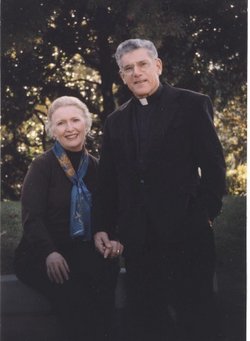In my life, I have been many places, but never have I been to the Holy Land. I am not a tour-taker, but tend to go to a foreign land and stake out a place, then make my own way through the places I have wanted to see.
My peripatetic lifestyle continues, as God has not put me down somewhere yet, so today, I have been musing on the wildflowers of the Holy Land. Sometimes I feel like a wildflower.
I wonder whether these flowers, prominent in a book I have from the early 1960s, which was a reprint of a much older book, exist after all the wars and turmoil of building?
The Cornflower, for example, resembles the North American, and even the British Cornflower. In my home state, unless farmers kill them for more land, these grow on the edge of fields, adding a nice blue hem to large tracts of corn and soybeans.
The so-called "lily of the field" is not a lily, but a deep red Scarlet Anemone. Resembling a poppy, this would be an "exotica" for me to see.
The Jerusalem Crowfoot reminds me of my beloved buttercup, which grows along streams in Surrey and Sussex, as well as other places, literally hanging over the cool water like votives of the pool.
Of course, the Narcissus grow almost everywhere both in England and in North America. Some think this lovely flower is the "Rose of Sharon" mentioned in the Bible. If so, I would love to see it in its Holy Land setting.
I have seen Pomegranate plants, and had one is a garden in England, which was not an edible one, but purely an ornamental one. The flower is bright red. Of course, this is mentioned in the Old Testament several times.
Lupins, especially the blue variety, are also common in England. Apparently these grow in Galilee.
Morning Glories are considered weeds by many in the Midwest of America, where this flower grows almost everywhere there is a space. But, in the Holy Land, it reminds one of the the grain fields and Christ's parables on the wheat and tares, if you remember my post on tares.....
Tulips grow in the Holy Land, as I learned from this little book. Bright red, these command attention, as do the poppies and anemones found there.
Vetchling grows in Iowa and in England. And, it grows in the Holy Land, but not blue, as it is here.
Purple vetch grows right outside my window, but I would love to see the bright
orangish variety of the Holy Land. Imagine the purple and orange growing side-by-side.
But, of course, my favorite would be the Thicket Rose, a wild rose very similar to the wild rose of Iowa, the official flower of that state, as well as Alberta, Canada. The Thicket Rose in the Holy Land is a trailing rose, like another one of my favorites in England, the City of York, only second to the climber Iceberg. I like the old roses best, but for climbers, would have those two.
I wonder today, as I think of the Holy Land, whether I shall ever get a chance to see the flowers where Christ walked?
When I was in Tyburn in Cobh, I walked and prayed daily in the Bible Garden the nuns planted. That was a real treat, as all the flowers, shrubs and trees therein were mentioned in the Bible.
Happy days....I remember these walks as if I had been there yesterday.








